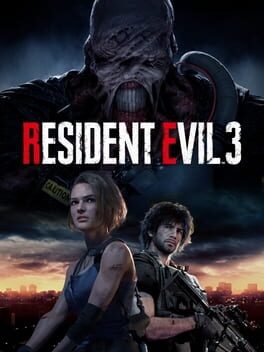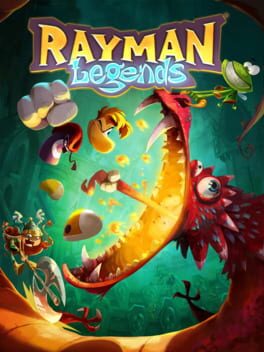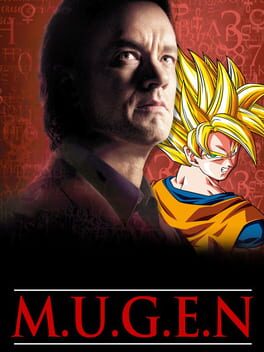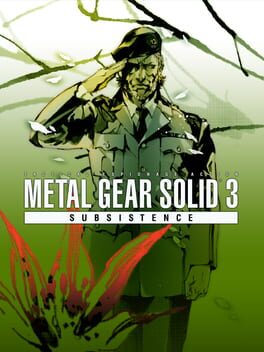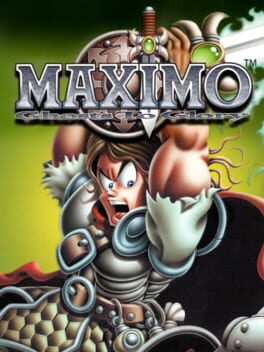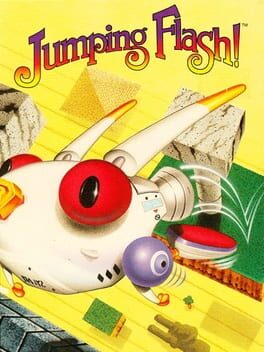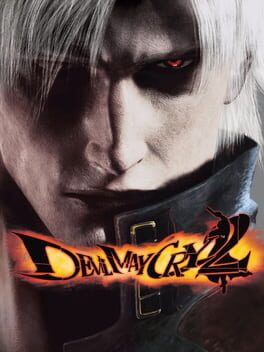JetSetSet
2020
I think a lot of people exaggerate the problems with this game and hate it to an unhealthy level because at the end of the day it's just a weaker RE2R and that's not something to start riots over.
That said, it CAN'T be overstated just how much of a wasted opportunity Nemesis was. Instead of making the ultimate stalker enemy(something I think Capcom has still failed to truly do, despite trying it many times), they instead make Jill and Nemesis partake in a bunch of trite "set piece" moments that have zero tension and are too obviously scripted to be of any enjoyment. Instead of fearing Nemesis, I would just always dread seeing him appear in a cutscene because it meant I was gonna have to do another boring chase scene. This game was clearly made on a smaller budget than RE2R and they sure didn't make the best use of those resources.
---
Resident Evil: Resistance is unironically the best part of this package. Shame Capcom gave up on it so quickly.
That said, it CAN'T be overstated just how much of a wasted opportunity Nemesis was. Instead of making the ultimate stalker enemy(something I think Capcom has still failed to truly do, despite trying it many times), they instead make Jill and Nemesis partake in a bunch of trite "set piece" moments that have zero tension and are too obviously scripted to be of any enjoyment. Instead of fearing Nemesis, I would just always dread seeing him appear in a cutscene because it meant I was gonna have to do another boring chase scene. This game was clearly made on a smaller budget than RE2R and they sure didn't make the best use of those resources.
---
Resident Evil: Resistance is unironically the best part of this package. Shame Capcom gave up on it so quickly.
2013
Would rate it higher if you didn't have to replay 40 goddamn barely altered levels from Rayman Origins. I get that Origins probably didn't sell well so this was basically "new" content for a lot of players but it, combined with the lifeless painting hub and progression system that would feel more at home in a Free-to-Play title just undercut a lot of the excitement. Feels more like an expansion then a proper sequel.
2020
2018
1996
2007
One of Maddy Thorson's earlier freeware games. On paper, there's nothing truly exceptional about this game. It's just a very formulaic metroidvania platformer with a very simple presentation. I guess that's what I admire about it though. It's JUST the fundamentals but fairly polished. There's a lot of optional challenge and plenty of secrets to find, making for a fun time waster. One of the only metroidvanias I've ever finished, tbh.
When I first saw the trailer for Celeste, before even seeing who was making it, I KNEW it was a game from Maddy just by seeing the way the player character was moving, and how the level design looked. Even back in the mid 00's, Maddy was making the good shit.
When I first saw the trailer for Celeste, before even seeing who was making it, I KNEW it was a game from Maddy just by seeing the way the player character was moving, and how the level design looked. Even back in the mid 00's, Maddy was making the good shit.
1999
2006
I just replayed MGS3S for the first time in years. I'm not sure how to feel about it now.
Don't get me wrong, there's a ton I still adore about this game. The sheer attention to detail is staggering, even by modern game standards. There's so many big-brain strategies that, against all odds, work wonders. I truly doubt there is any single person who knows every single Easter egg this game hides. Hell, we'll probably learn about some absurd secret hidden under our noses years from now.
It's such a shame then that so much of the game's core mechanics and features make this sort of experimentation feel so tedious. I don't like to throw around claims like "this game's controls have aged badly" or something. I think the controls in MGS3 work exceptionally well for what they were first designed for: Metal Gear Solid 1 and 2.
MGS3 has a completely different flow to the previous entries. Where MGS1 & 2 have a fast, arcade-like pace to their stealth, where many of the game's systems are binary, MSG3 is a slower, more open-ended game. MGS3 has you navigating fields of tall grass more often than the metal hallways of previous entries. Enemies can see you from further and there's more to keep in mind. The camo index, your inventory of food, the survival viewer, your backpack, etc. While I know MGS3 pros have mastered the controls and can pull off incredible feats, I don't think Snake's robotic movements and archaic way of handling firearms is a good fit for the more freeform nature of MGS3's levels and encounters.
Purists can say that I'm not giving the game enough of a chance and maybe I'm not. I may have platinumed the HD version years ago but I'm writing this review after only playing through the campaign for the first time in over half a decade. Maybe MGSV has spoiled me, but I think it's telling that every mainline MGS game after 3 used more conventional controls, especially for aiming and crawling about.
It's disappointing because I love almost everything else about MGS3. It has the tight level design, memorable bosses, and loads of character that MGSV utterly lacked but it mechanically feels a lot more unintuitive than contemporaries I played at the time, like the early Splinter Cell games. I suppose I should just be thankful I replayed this game using the HD collection's Subsistence version and not the original Snaker Eater one that exclusively featured the camera style from MGS1 & 2.
Fuck anyone that doesn't like The Pain, though. A man covered in bees that he sends to do his bidding? All while cackling like a little goblin? Beautiful.
Don't get me wrong, there's a ton I still adore about this game. The sheer attention to detail is staggering, even by modern game standards. There's so many big-brain strategies that, against all odds, work wonders. I truly doubt there is any single person who knows every single Easter egg this game hides. Hell, we'll probably learn about some absurd secret hidden under our noses years from now.
It's such a shame then that so much of the game's core mechanics and features make this sort of experimentation feel so tedious. I don't like to throw around claims like "this game's controls have aged badly" or something. I think the controls in MGS3 work exceptionally well for what they were first designed for: Metal Gear Solid 1 and 2.
MGS3 has a completely different flow to the previous entries. Where MGS1 & 2 have a fast, arcade-like pace to their stealth, where many of the game's systems are binary, MSG3 is a slower, more open-ended game. MGS3 has you navigating fields of tall grass more often than the metal hallways of previous entries. Enemies can see you from further and there's more to keep in mind. The camo index, your inventory of food, the survival viewer, your backpack, etc. While I know MGS3 pros have mastered the controls and can pull off incredible feats, I don't think Snake's robotic movements and archaic way of handling firearms is a good fit for the more freeform nature of MGS3's levels and encounters.
Purists can say that I'm not giving the game enough of a chance and maybe I'm not. I may have platinumed the HD version years ago but I'm writing this review after only playing through the campaign for the first time in over half a decade. Maybe MGSV has spoiled me, but I think it's telling that every mainline MGS game after 3 used more conventional controls, especially for aiming and crawling about.
It's disappointing because I love almost everything else about MGS3. It has the tight level design, memorable bosses, and loads of character that MGSV utterly lacked but it mechanically feels a lot more unintuitive than contemporaries I played at the time, like the early Splinter Cell games. I suppose I should just be thankful I replayed this game using the HD collection's Subsistence version and not the original Snaker Eater one that exclusively featured the camera style from MGS1 & 2.
Fuck anyone that doesn't like The Pain, though. A man covered in bees that he sends to do his bidding? All while cackling like a little goblin? Beautiful.
Maximo is one of the most literal translations of 80's 2D action platforming gameplay to the third dimension I've ever played. It manages to capture a lot of what made those retro platforming games so addictingly brutal but often doesn't account for how an extra axis can affect those design sensibilities.
First, let's just get the camera out of the way. Maximo doesn't make use of the right thumbstick. Straight up. It's a baffling omission and the only camera control you have is being able to center it with L1, but only when you're not moving the left thumbstick. Combine that with the one-of-a-kind decision to deliberately have the camera at a tilted angle, seemingly done to put the player at unease, and there can often be a lot of self-doubt when trying to aim at enemies or jump onto tiny platforms. Sometimes I'll see reviewers complain about a game's camera when said game is something like a kid-friendly 3D platformer. Like, who cares if the camera requires manual control in Sonic or Sly Cooper? You're not doing anything too taxing that'd prevent you from dual-tasking both your character and the camera. That sort of handwavy defense doesn't work so well when you're playing a more demanding title where the smallest of mistakes can lead to disastrous losses.
Maximo doesn't present the most complex challenges gaming has to offer but instead gives the player relatively basic hurdles to overcome and punishes the player severely for every misstep. Enemies and environmental hazards behave with the kind of rudimentary language you'd expect from old NES games. Maximo's arsenal of abilities is microscopic compared to other action game stars at the time but his move list can be expanded by finding Ability pickups from slain enemies. A lot of these are immensely useful, to the point that you'd feel naked without them... and that's when Maximo(the game) kicks your sorry ass by revealing the punishment for death: All abilities you're holding onto will be lost upon death, outside of the few you're allowed to "save" in your special "Locked Slots". It's like losing all your options in a bullet hell shmup. As the game progresses, more and more enemies and hazards will start to expect you to be equipped with certain abilities, making a parade of quick deaths likely unless you can find a workaround. For example, there's an enemy who chucks bombs at you who, if hit with any non-projectile attack, will explode in your face and deal massive damage. If you don't have a projectile-related ability of any sort (not something you're given by default) then you can't defeat them safely and must run around them entirely. Hell, even your shield is a commodity. Truly, nothing can be taken for granted in the world of Maximo.
That's what makes the rudimentary camera and lack of a lock-on or any other kind of Quality of Life feature an issue. Maximo has a lives system and requires you to pay Koins(yes, it's spelled with a K) to save your game and while I didn't ever have to use a continue(which, in theory, are also limited) a few of the deaths I had didn't feel entirely my fault, which doesn't sit well when dying has the potential to set you so far back and make you feel like utter shit.
So why do I like Maximo? Well, sometimes it's fun to play a no-frills 3D action platformer. Not many of those truly exist and it's nice that Maximo sticks to its guns and knows when to roll credits. It's not a terribly long game, and its pick-up-and-play nature harkens back to the days when you could waltz into an arcade and just give any game you saw a shot. You'll lose everything when you die in Maximo, but you've got nothing to lose if you decide to give Maximo a play.
...
Just wanna add that getting the "Mastery" label for every level looks nightmarish. You have to collect every koin, defeat every enemy(can't let them die by their own hands), collect every stationary power-up, open every chest, and break every interactable object in a level to get it. Try doing it yourself, you won't, coward.
First, let's just get the camera out of the way. Maximo doesn't make use of the right thumbstick. Straight up. It's a baffling omission and the only camera control you have is being able to center it with L1, but only when you're not moving the left thumbstick. Combine that with the one-of-a-kind decision to deliberately have the camera at a tilted angle, seemingly done to put the player at unease, and there can often be a lot of self-doubt when trying to aim at enemies or jump onto tiny platforms. Sometimes I'll see reviewers complain about a game's camera when said game is something like a kid-friendly 3D platformer. Like, who cares if the camera requires manual control in Sonic or Sly Cooper? You're not doing anything too taxing that'd prevent you from dual-tasking both your character and the camera. That sort of handwavy defense doesn't work so well when you're playing a more demanding title where the smallest of mistakes can lead to disastrous losses.
Maximo doesn't present the most complex challenges gaming has to offer but instead gives the player relatively basic hurdles to overcome and punishes the player severely for every misstep. Enemies and environmental hazards behave with the kind of rudimentary language you'd expect from old NES games. Maximo's arsenal of abilities is microscopic compared to other action game stars at the time but his move list can be expanded by finding Ability pickups from slain enemies. A lot of these are immensely useful, to the point that you'd feel naked without them... and that's when Maximo(the game) kicks your sorry ass by revealing the punishment for death: All abilities you're holding onto will be lost upon death, outside of the few you're allowed to "save" in your special "Locked Slots". It's like losing all your options in a bullet hell shmup. As the game progresses, more and more enemies and hazards will start to expect you to be equipped with certain abilities, making a parade of quick deaths likely unless you can find a workaround. For example, there's an enemy who chucks bombs at you who, if hit with any non-projectile attack, will explode in your face and deal massive damage. If you don't have a projectile-related ability of any sort (not something you're given by default) then you can't defeat them safely and must run around them entirely. Hell, even your shield is a commodity. Truly, nothing can be taken for granted in the world of Maximo.
That's what makes the rudimentary camera and lack of a lock-on or any other kind of Quality of Life feature an issue. Maximo has a lives system and requires you to pay Koins(yes, it's spelled with a K) to save your game and while I didn't ever have to use a continue(which, in theory, are also limited) a few of the deaths I had didn't feel entirely my fault, which doesn't sit well when dying has the potential to set you so far back and make you feel like utter shit.
So why do I like Maximo? Well, sometimes it's fun to play a no-frills 3D action platformer. Not many of those truly exist and it's nice that Maximo sticks to its guns and knows when to roll credits. It's not a terribly long game, and its pick-up-and-play nature harkens back to the days when you could waltz into an arcade and just give any game you saw a shot. You'll lose everything when you die in Maximo, but you've got nothing to lose if you decide to give Maximo a play.
...
Just wanna add that getting the "Mastery" label for every level looks nightmarish. You have to collect every koin, defeat every enemy(can't let them die by their own hands), collect every stationary power-up, open every chest, and break every interactable object in a level to get it. Try doing it yourself, you won't, coward.
1995
Out of all of the PSX's first party classics, Jumping Flash! is one of the most undersung, despite being the definition of a trailblazer. Released a year before Super Mario 64 would revolutionize 3D cameras in games and help solidify the 3D platforming subgenre, Jumping Flash! is a 3D platformer/shooter played from a first person perspective. Many developers have tried over the years to integrate platforming into the FPS genre and nearly as many have failed to really make it work. This makes it all the more impressive that a game from 1995 not only managed to make first person platforming fun, but even incorporates the act of hopping into its combat in a fairly novel way.
Robbit, your mecha rabbit player character, can jump up to three times in the air. Whenever you perform a double or triple jump, the camera aims downward to let you see where you'll be landing. This has the double use of letting you fire you blasters down at anything below you. Because jumping on enemies does even more damage than simply firing at them with your default guns, you're encouraged to leap high into the sky and rain lasers onto your foes from above as you come crashing down on top of them. After making contact with the enemy, you'll bounce right back up into the air, letting you repeat the process. This all leads to the combat having a very tactile feel and keeps you moving. You'll start to treat the floor like lava as you bounce from one enemy to the next in succession. It's a very unique kind of shooting/platforming experience even to this day.
Sadly, the game's origins as an early PSX game do limit how fully realized this gameplay loop can be. You can only strafe in the air, and even then the controls for it are unintuitive. Enemies also come in relatively small numbers and have very basic attack patterns so you won't always be able to find a baddie to land on, breaking the flow. Some levels also take place in cramped corridors that do the aerial combat any favors. It's nothing too dire but these shortcomings stop the game from reaching its full potential and keep the game fairly tame and hard to perceive as anything other than a short, fun distraction instead of the game changer it almost was.
Some indie games in the past few years have experimented more and more with first person platforming, so perhaps a game will finally come along and show us the endgame that Jumping Flash! could have offered us if it were given more than a couple sequels.
https://youtu.be/LOwMWfud04U
Robbit, your mecha rabbit player character, can jump up to three times in the air. Whenever you perform a double or triple jump, the camera aims downward to let you see where you'll be landing. This has the double use of letting you fire you blasters down at anything below you. Because jumping on enemies does even more damage than simply firing at them with your default guns, you're encouraged to leap high into the sky and rain lasers onto your foes from above as you come crashing down on top of them. After making contact with the enemy, you'll bounce right back up into the air, letting you repeat the process. This all leads to the combat having a very tactile feel and keeps you moving. You'll start to treat the floor like lava as you bounce from one enemy to the next in succession. It's a very unique kind of shooting/platforming experience even to this day.
Sadly, the game's origins as an early PSX game do limit how fully realized this gameplay loop can be. You can only strafe in the air, and even then the controls for it are unintuitive. Enemies also come in relatively small numbers and have very basic attack patterns so you won't always be able to find a baddie to land on, breaking the flow. Some levels also take place in cramped corridors that do the aerial combat any favors. It's nothing too dire but these shortcomings stop the game from reaching its full potential and keep the game fairly tame and hard to perceive as anything other than a short, fun distraction instead of the game changer it almost was.
Some indie games in the past few years have experimented more and more with first person platforming, so perhaps a game will finally come along and show us the endgame that Jumping Flash! could have offered us if it were given more than a couple sequels.
https://youtu.be/LOwMWfud04U
2003
Devil May Cry 2 is one of the most fascinating missteps I've ever seen. The only thing you ever hear about DMC2 is that it sucks, and it truly does, but the level at which DMC2 utterly butchers everything great about the original DMC1 makes the game feel like a fever dream. Even at the most fundamental level all of Dante's tools from the first game feel incredibly stiff and slow. There's simply no joy to any of his moves.
Somehow this isn't DMC2's biggest shortcoming. That would be the enemies. Sometimes I wonder if the foes in this game were even designed for a game where the player character has firearms, because most enemies don't seem to mind getting mowed down by a hail of gunfire from across the map. This is largely due to two factors. The first is that nearly all enemies lack any kind of a gap-closer. The second is that your guns stun lock most enemies regardless of what they're doing. This means the only challenge combat can give you is from the cheapest methods possible. Enemies attacking offscreen without proper sound cues is quite a popular one. Another is enemies hovering outside of melee range, and having lord-knows how much health. Every enemy encounter is either so trivially short that you'll forget it even happened a minute later, or so painfully drawn out that you'll legitimately start questioning your life choices. I honestly feel like calling the game boring is a massive understatement. I don't think mankind has invented a word strong enough to describe the amount of tedium DMC2 has to offer.
This alternate form of melatonin "only" lasts 4 hours if you're stupid enough to play both Dante and Lucia's campaigns(like me!), but you'll feel like you wasted an eternity on it. Even after all I've said, NOTHING will prepare you for how much of a slog DMC2 is. Most bad games offer some semblance of entertainment, even if it's from unintentional means, but DMC2 offers nothing but regret and absolute bewilderment that this franchise somehow continued after this joyless, aimless mess.
The game's style indicator says "Don't Worry" when you have a D rank, but you should. You really, really should.
Somehow this isn't DMC2's biggest shortcoming. That would be the enemies. Sometimes I wonder if the foes in this game were even designed for a game where the player character has firearms, because most enemies don't seem to mind getting mowed down by a hail of gunfire from across the map. This is largely due to two factors. The first is that nearly all enemies lack any kind of a gap-closer. The second is that your guns stun lock most enemies regardless of what they're doing. This means the only challenge combat can give you is from the cheapest methods possible. Enemies attacking offscreen without proper sound cues is quite a popular one. Another is enemies hovering outside of melee range, and having lord-knows how much health. Every enemy encounter is either so trivially short that you'll forget it even happened a minute later, or so painfully drawn out that you'll legitimately start questioning your life choices. I honestly feel like calling the game boring is a massive understatement. I don't think mankind has invented a word strong enough to describe the amount of tedium DMC2 has to offer.
This alternate form of melatonin "only" lasts 4 hours if you're stupid enough to play both Dante and Lucia's campaigns(like me!), but you'll feel like you wasted an eternity on it. Even after all I've said, NOTHING will prepare you for how much of a slog DMC2 is. Most bad games offer some semblance of entertainment, even if it's from unintentional means, but DMC2 offers nothing but regret and absolute bewilderment that this franchise somehow continued after this joyless, aimless mess.
The game's style indicator says "Don't Worry" when you have a D rank, but you should. You really, really should.
2001
This is probably still my favorite game in the franchise. Might sound strange to some since the game's combat is a lot more limited when compared to later entries but that's part of why I love it. Every move in Dante's arsenal is worth using at some point or another and I do mean EVERY move. Charging Ebony and Ivory with DT to increase your style against Griffon. Locking Nobodies in place with Round Trip. Shotgun cancelling Bloody Maries. Vortexing Phantom to death during the chase scenes. Every move I ever doubted on my first playthrough back in 2012 have proven me wrong and become staples in my moveset in the years since. While it's an absolute blast experimenting with Dante's expanded kits in later titles, it's just as rewarding finding new uses for moves you once thought had been depleted of all their worth.
A big contributing factor to all this is the stellar boss lineup. I don't know how Hideki Kamiya and his team did it, but Team Little Devils created one of the best rogues galleries in an action game all the way back in 2001. This game's roster of baddies will test you, and I mean fucking TEST you on all of your defensive options as well as your offensive ones. Even enemy attacks that you once thought you mastered your way around will turn out to have an even more efficient way of dealing with them as your skill and understanding of the mechanics increase. You're always learning new things against these foes and that goes doubly so for the bosses. Phantom, Griffon, Nero Angelo, even the dreaded Nightmare (ESPECIALLY Nightmare) all offer many lessons you'll take to heart. Some of these are exclusive for their respective fights, like learning how Nightmare's cores work. Others are multi-purpose, like figuring out double jumping before striking down on Phantom from above deals more damage. The game even uses its Secret Missions to teach some of these techniques and it does so with more elegance than the missions in later DMC games.
To top my love for this game off, I want to give a special mention to this game's wonderfully eerie atmosphere. Something later DMC games lost. Mundus' castle feels like a place lost to time. The world feels alive, not in a "Oh wow, there's so many moving objects and blah blah blah" sort of way but more in a "The castle is a liminal space that's trying to swallow you whole" kind of way. The early levels have music that sounds like the dead are having a ballroom dance in an adjacent room while later stages have music that feels utterly oppressive, like you pissed off the castle itself and now it's trapped you within its walls. I really wish the franchise would return to this kind of horror instead of the dull, lifeless environments found in later installments.
Then again, it's not so surprising DMC1 would have these horror elements, along with more focused gameplay. The title was going to be Resident Evil 4 at one point in development and it seems a bit of that classic RE game flavor found its way into the final product. When taking that factoid into account, it's a miracle DMC1 is not only a game so fantastic that it kickstarted a brand new franchise, but one to make such a strong impact on the future of high quality action games.
Devil May Cry's a rocking don't come a knocking baby, yeah!
A big contributing factor to all this is the stellar boss lineup. I don't know how Hideki Kamiya and his team did it, but Team Little Devils created one of the best rogues galleries in an action game all the way back in 2001. This game's roster of baddies will test you, and I mean fucking TEST you on all of your defensive options as well as your offensive ones. Even enemy attacks that you once thought you mastered your way around will turn out to have an even more efficient way of dealing with them as your skill and understanding of the mechanics increase. You're always learning new things against these foes and that goes doubly so for the bosses. Phantom, Griffon, Nero Angelo, even the dreaded Nightmare (ESPECIALLY Nightmare) all offer many lessons you'll take to heart. Some of these are exclusive for their respective fights, like learning how Nightmare's cores work. Others are multi-purpose, like figuring out double jumping before striking down on Phantom from above deals more damage. The game even uses its Secret Missions to teach some of these techniques and it does so with more elegance than the missions in later DMC games.
To top my love for this game off, I want to give a special mention to this game's wonderfully eerie atmosphere. Something later DMC games lost. Mundus' castle feels like a place lost to time. The world feels alive, not in a "Oh wow, there's so many moving objects and blah blah blah" sort of way but more in a "The castle is a liminal space that's trying to swallow you whole" kind of way. The early levels have music that sounds like the dead are having a ballroom dance in an adjacent room while later stages have music that feels utterly oppressive, like you pissed off the castle itself and now it's trapped you within its walls. I really wish the franchise would return to this kind of horror instead of the dull, lifeless environments found in later installments.
Then again, it's not so surprising DMC1 would have these horror elements, along with more focused gameplay. The title was going to be Resident Evil 4 at one point in development and it seems a bit of that classic RE game flavor found its way into the final product. When taking that factoid into account, it's a miracle DMC1 is not only a game so fantastic that it kickstarted a brand new franchise, but one to make such a strong impact on the future of high quality action games.
Devil May Cry's a rocking don't come a knocking baby, yeah!
